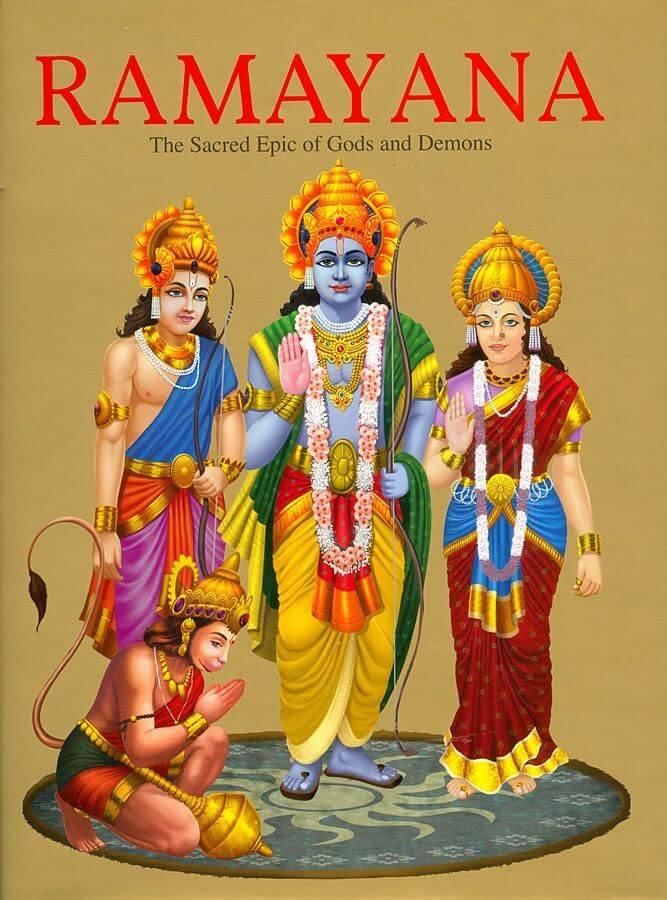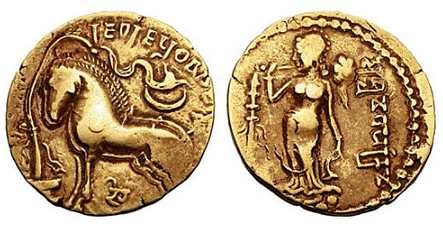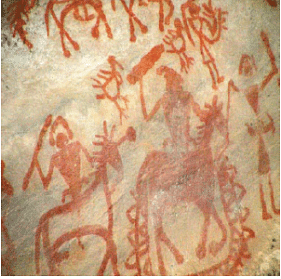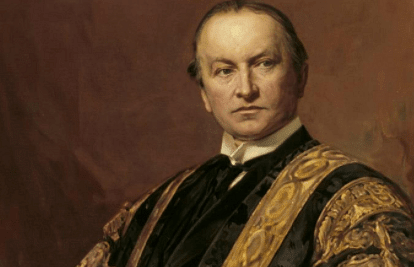Sources of Ancient History | SSC CGL Tier 2 - Study Material, Online Tests, Previous Year PDF Download
What is Prehistoric?
 Prehistoric Period
Prehistoric Period
- The distant past when there was no paper or language or the written word, and hence no books or written document, is called as the Prehistoric period.
- It was difficult to understand how Prehistoric people lived until scholars began excavations in Prehistoric sites.
- Piecing together of information deduced from old tools, habitat, bones of both animals and human beings and drawings on the cave walls scholars have constructed fairly accurate knowledge about what happened and how people lived in prehistoric times.
- Paintings and drawings were the oldest art forms practiced by human beings to express themselves using the cave wall as their canvas.
Sources of Prehistoric Period
Sources of Prehistoric Period (Ancient Indian History) can be described under the following five headings.
Literary Sources
The ancient Indian literature was mostly religious in nature and contains no definite date for events and kings.
Example: The Puranas and the epics. Vedic literature has no trace of political history but has reliable glimpses of the culture and civilisation of the age. The epics like Ramayana, Mahabharata and the Jaina and Buddhist religious texts supply us with some important historical material with doses of religious messages. Ramayana
Ramayana
- Upanishads: Main source of Indian philosophy, also known as "Vedanta".
- Jaina Parisistaparvan, Buddhist Dipavamsa, and Mahavamsa: Contain traditions providing historical materials.
- Gargi Samhita, Panini's grammar, and Patanjali's works: Provide insights into ancient Indian astronomy, linguistics, and philosophy, aiding in historical reconstruction.
- Political Treatises: From the second half of ancient Indian history, panegyrics of kings and emperors, as well as political treatises like Kautilya's Arthashastra and Manusmriti, offer principles of administration from the Maurya period.
- Literary Works: Vishakhadatta's Mudrarakshasa, Kalidasa's Malavikagnimitram, Banabhatta's Harshacharita, Bharathiraja's Gaudavaho, and Bilhana's Vikramanka Charita provide insights into ancient Indian society, culture, and historical events.
- Personal Accounts: Sandhyakar Nandi's Ramacharita describes the reign of Rampal, a king of the Pala dynasty of Bengal. Kalhana's Rajatarangini provides a valuable account of the kings of Kashmir.
- Other Literary Works: Padmagupta's Navasahasanka Charita, Hem Chandra's Dwasraya Kavya, Nyaya Chandra's Hammir Kavya, and Ballal's Bhoja Prabandha also contain important historical materials.
Archaeological Evidence
The archaeological evidence is obtained by the systematic and skilled examination of building monuments, and work of art. The credit for excavating the pre-Aryan past goes to Sir William Jones of the Asiatic Society of Bengal (established on 1st January 1784).
 Lord Curzon
Lord Curzon
- Alexander Cunningham: Royal Engineer, known as the Father of Indian Archaeology, dug out ruins of pre-Aryan culture. From 1831 until 1862, he studied ancient India alongside military duties. In 1862, he was appointed as the first Archaeological Surveyor by the Indian government.
- Lord Curzon and John Marshall: In 1901, Lord Curzon expanded the Archaeological Survey, appointing John Marshall as its Director-General. Marshall oversaw significant advancements in archaeological exploration.
- Discovery of Indus Valley Civilisation: In 1921, Daya Ram Sahni, under Marshall's leadership, discovered India's oldest cities, Harappa and Mohenjodaro, dating back to the second Inter-Glacial period (400,000-200,000 BC). These discoveries led to the recognition of the Indus Valley Civilisation.
- R.D. Banerjee's Contribution: In 1922, R.D. Banerjee further excavated Mohenjodaro, confirming its status as a pre-Aryan civilisation of great antiquity.
- Systematic Excavations: Under John Marshall's direction, systematic excavations of Harappa and Mohenjodaro were conducted from 1924 to 1931, revealing invaluable insights into ancient Indian civilisation.
Inscriptions
Inscriptions are the most reliable evidence and their study is called epigraphy. These are mostly carved on gold, silver, iron, copper, bronze plates or stone pillars, rocks, temple walls and bricks and are free from interpolations.
 Inscriptions
Inscriptions
- Types of Inscriptions: Inscriptions are categorized into three main types: royal eulogy, official documents (such as royal rescripts, boundary marks, deeds, and gifts), and private records (including votive, donating, or dedicated records).
- Languages and Scripts: Inscriptions have been discovered in various languages including Prakrit, Pali, Sanskrit, Telugu, Tamil, and others, but the majority are found in Brahmi and Kharosthi scripts.
- Decipherment of Brahmi Script: James Prinsep, Secretary of the Asiatic Society of Bengal, successfully deciphered the Brahmi script, marking a significant breakthrough in understanding ancient Indian inscriptions.
- Significance of Inscriptions: Inscriptions provide valuable historical evidence. Emperor Ashoka's inscriptions are particularly notable for insights into his reign. Additionally, inscriptions of figures like Kharvel, Rudradaman, and the Allahabad Prashasti by Harisena offer crucial evidence for reconstructing India's history.
Coins
 Samudragupta's Aswamedha coins
Samudragupta's Aswamedha coins
- Numismatics: Study of coins, providing insights into ancient economic conditions, currency systems, and metallurgical advancements.
- Discoveries: Thousands of ancient Indian coins have been unearthed, offering valuable information about the society and culture of the time.
- Samudragupta's Coins: Coins featuring images of Samudragupta playing on a lyre depict his love of music, while coins depicting events such as the Ashwamedha and Lion-slayer reflect his ambitions and interests.
- Historical Insights: Dates on coins help in understanding contemporary political history, providing important chronological markers for events and rulers.
- Importance: Ancient Indian coins serve as tangible artifacts that offer a glimpse into the past, shedding light on the lives, beliefs, and achievements of ancient civilizations.
Accounts of the Foreigners
A great deal of our knowledge of ancient Indian History is supplemented by the writing of foreigners. The below table gives a brief survey of important literary works of foreign scholars, mentioning the subjects their works deal with.
Literary Works of Foreign Authors
Prehistoric Period: Paleolithic Age, Mesolithic Age, and Chalcolithic Age
The drawings and paintings can be catagorised into seven historical periods. Period I, Upper Palaeolithic; Period II, Mesolithic; and Period III, Chalcolithic. After Period III there are four successive periods. But we will confine ourselves here only to the first three phases. Prehistoric Era art denotes the art (mainly rock paintings) during Paleolithic Age, Mesolithic Age and Chalcolithic Age.
(i) Paleolithic Age Art
 Paleolithic Art
Paleolithic Art
- Prehistoric Period: Commonly referred to as the ‘Old Stone Age’ or ‘Palaeolithic Age’, marks the early development of human beings.
- Phases of Paleolithic Period:
- Lower Palaeolithic (2,50,000 BC-1,00,000 BC)
- Middle Palaeolithic (1,00,000 BC – 40,000 BC)
- Upper Palaeolithic (40,000 BC- 10,000BC)
- Artistic Activities: Artistic activities proliferated in the Upper Palaeolithic period, with early works depicting simple human figures, activities, geometric designs, and symbols.
- First Discovery of Rock Paintings: Made in India in 1867-68 by Archaeologist Archibold Carlleyle, twelve years before the discovery of Altamira in Spain.
- Distribution of Rock Paintings: Remnants of rock paintings found in caves across various districts of Madhya Pradesh, Uttar Pradesh, Andhra Pradesh, Telangana, Karnataka, Bihar, and Uttarakhand.
- Characteristics of Early Paintings:
- Stick-like representations of human beings.
- Depictions of long-snouted animals, foxes, multi-legged lizards, and later various other animals.
- Geometric designs such as wavy lines, rectangular filled designs, and dots.
- Superimposition of paintings in black, red, and white.
- Development of Subjects: In later historic and Neolithic periods, paintings depicted Bulls, Elephants, Sambhars, Gazelles, Sheep, Horses, stylized human beings, tridents, and occasionally vegetal motifs.
- Major Sites of Prehistoric Paintings in India:
- Bhimbetka Caves, located in the foothills of Vindhya, Madhya Pradesh.
- Jogimara Caves, situated in Amarnath, Madhya Pradesh.
- Richness of Paintings: The Vindhya range in Madhya Pradesh and its Kaimurean extension into Uttar Pradesh are reported to have the richest prehistoric paintings, with abundant Palaeolithic and Mesolithic remains.
Bhimbetka Caves
 Bhimbetka Caves
Bhimbetka Caves
- Bhimbetka Caves: Discovered in 1957-58, these caves exhibit nearly 400 painted rock shelters in five clusters, showcasing continuous occupation from 100,000 B.C to 1000 A.D.
- Evidence of Long Cultural Continuity: The continuous occupation of the caves for such an extended period serves as evidence of long cultural continuity.
(II) Upper Paleolithic Age:
 Upper Paleolithic Art
Upper Paleolithic Art
- Linear representations of huge animal figures like Bisons, Tigers, Elephants, Rhinos, and Boars alongside stick-like human figures.
- Paintings predominantly filled with geometric patterns.
- Green paintings depict dances, while red ones depict hunters.
(III) Mesolithic Period Art:
 Mesolithic Period Art
Mesolithic Period Art
- Largest number of paintings belong to this period.
- Small-sized paintings with hunting scenes predominating.
- Depictions of hunters in groups armed with barbed spears, pointed sticks, arrows, and bows.
- Traps and snares used for catching animals depicted in some paintings.
- Naturalistic style for animals and stylistic manner for humans.
- Depictions of women both nude and clothed, along with representations of various age groups and family life.
- Community dances and scenes of hunting prevalent.
(IV) Chalcolithic Period Art:
 Chalcolithic Period Art
Chalcolithic Period Art
- Reflects the Copper Age.
- Paintings reveal associations with settled agricultural communities of the Malwa Plateau.
- Pottery and metal tools depicted in paintings.
- Common motifs like cross-hatched squares and lattices similar to earlier periods.
- Vividness and vitality seen in older periods diminish in these paintings.
Some of the general features of Prehistoric paintings (based on the study of Bhimbetka paintings)
- Colors Used: Various shades of white, yellow, orange, red ochre, purple, brown, green, and black were used, with white and red being favorites.
- Preparation of Paints: Paints were made by grinding colored rocks, with haematite providing red, chalcedony for green, and limestone for white. Sticky substances like animal fat or tree resin were used as binders.
- Brushes: Brushes were made of plant fiber.
- Longevity of Colors: Colors remained vibrant for thousands of years due to chemical reactions with the surface of rocks.
- Significance of Paintings: Found in both occupied and unoccupied caves, suggesting possible use as signals or warnings. New paintings often overlaid older ones, indicating gradual development over time.
- Symbolism and Inspiration: Symbolism drawn from nature with hints of spirituality. Ideas expressed through minimalistic drawings, mainly stick-like representations of men.
- Geometrical Patterns: Many paintings feature geometrical patterns alongside scenes of hunting and daily life.
- Subjects Depicted: Depictions include flora, fauna, humans, mythical creatures, carts, and chariots.
- Emphasis on Red and White: Red and white colors were given particular importance in the paintings.
|
1365 videos|1312 docs|1010 tests
|
FAQs on Sources of Ancient History - SSC CGL Tier 2 - Study Material, Online Tests, Previous Year
| 1. What are the sources of information for the Prehistoric Period? |  |
| 2. What are the different periods within the Prehistoric Period? |  |
| 3. What is the significance of Bhimbetka Caves in the study of Prehistoric history? |  |
| 4. How do archaeologists determine the age of artifacts from the Prehistoric Period? |  |
| 5. Why is the study of the Prehistoric Period important in understanding human evolution and development? |  |
|
1365 videos|1312 docs|1010 tests
|

|
Explore Courses for SSC CGL exam
|

|



















